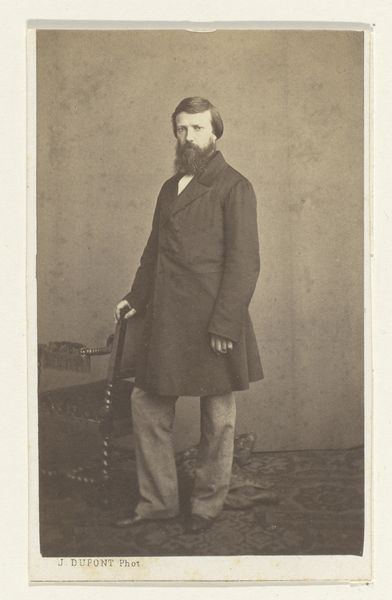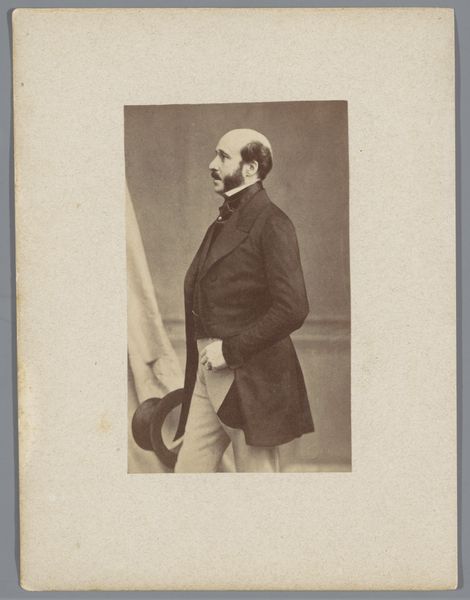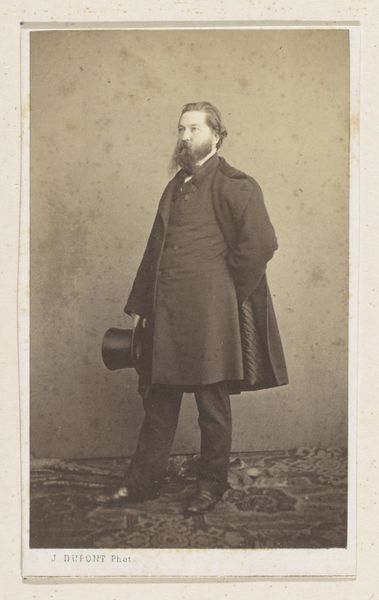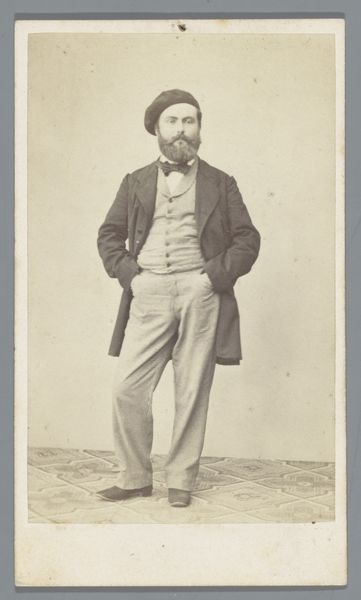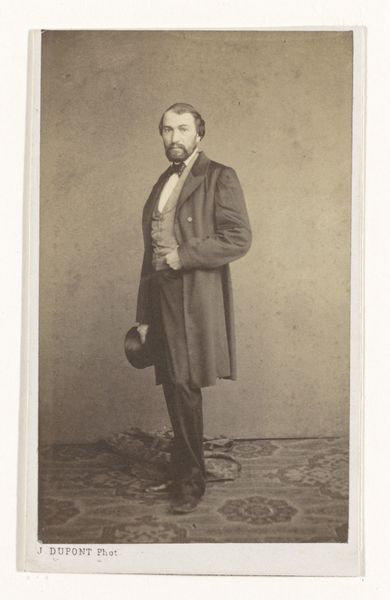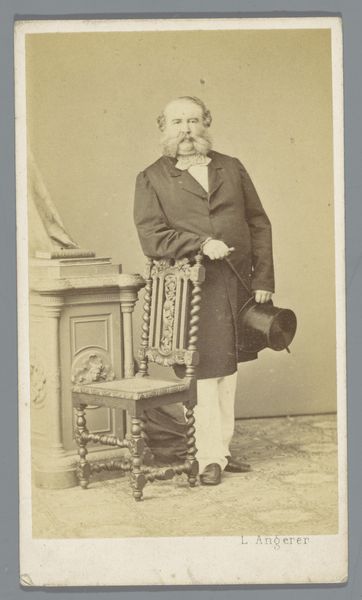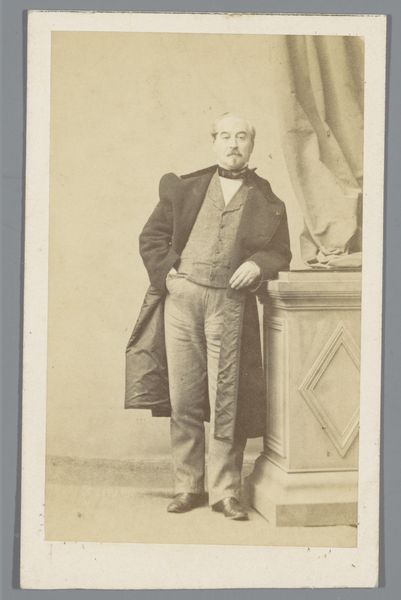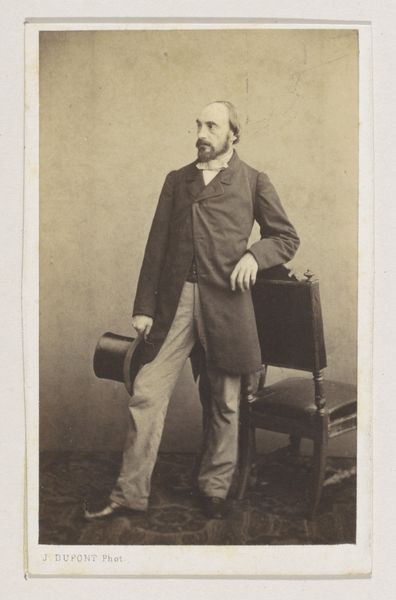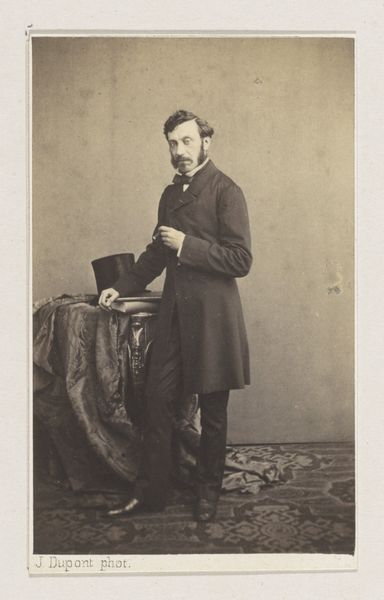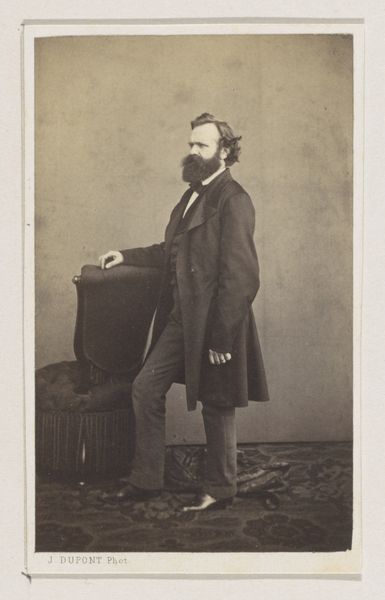
Dimensions: height 102 mm, width 62 mm
Copyright: Rijks Museum: Open Domain
Curator: This striking image is a gelatin-silver print from 1861 by Joseph Dupont, titled "Portrait of the sculptor Willem Geefs, full-length." Editor: The subdued tonality makes it appear as though he is fading slightly into the scene; he seems like a ghost of a man, emerging and vanishing at once. There’s a softness in the gradations of gray, a lack of sharp contrast, that contributes to this rather subdued, ethereal mood. Curator: I’m drawn to how the artist captured a fellow artisan, likely utilizing collodion plates which were popular around that time. Think about the physical labor, the darkroom process, the specific chemistry and lighting conditions required. How that dictated image making as material constraint. Editor: Positioning Geefs like this within a carefully curated space raises questions. What does it signify to capture and freeze his identity during an era defined by rigid social structures and emergent technologies? His gaze is averted and not directly engaging; in his refusal he mirrors that period of transition and the weight of expectation, isn't it? Curator: Perhaps. It also points to the complex economics of art-making. Photographers like Dupont found patronage documenting artists, providing affordable imagery circulating within burgeoning art markets, especially with industrial production democratizing art consumption during Romanticism. This print testifies a web of interlinked creative laborers. Editor: Precisely, his suit and stature communicate authority within a specific class system. However, is his averted gaze a quiet challenge to that system? Is this perhaps a depiction that hints at social shifts during a period of political and creative tumult? There's a performative aspect here too in the studied pose. Curator: Fascinating to examine such intersection through his clothes— the cut of his jacket and trousers, fabrics as signifiers, the physical labor required to keep such appearance that communicates professional success—all are tied together. It provides us with hints about contemporary modes of dress in which he exists as both a sculptor but also urban professional. Editor: Indeed, the photo reminds us of the importance of art both reflecting its time and creating it too. To study a simple portrait like this and discuss larger concepts opens up our own understanding. Curator: Agreed, examining it this way enables us appreciate a work not just aesthetically, but also technically.
Comments
No comments
Be the first to comment and join the conversation on the ultimate creative platform.
